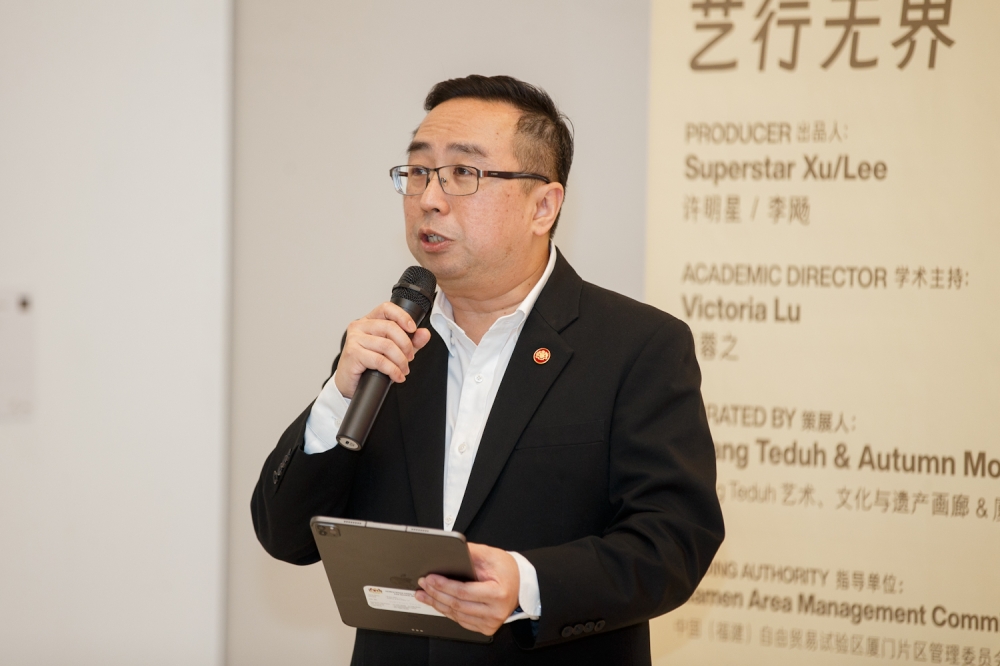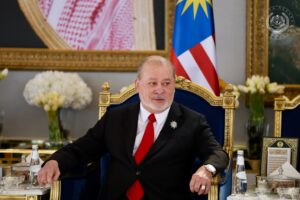KUALA LUMPUR, Nov 4 — Malaysia is set to see greater cultural and creative collaboration with China over the next three years as Seni Malaya, through Ruang Teduh Gallery, today signed a strategic cooperation agreement with Xiamen-based Qiudi Art Centre.
The agreement was formalised at the launch of the “Art Beyond National Boundaries: ASEAN Tour of Young Contemporary Artists from China” exhibition held at the Exchange 106, Tun Razak Exchange (TRX).
The exhibition marks the 50th anniversary of diplomatic ties between Malaysia and China.
Malaysia is the second stop for the art tour — a collection of nearly 100 works by 40 contemporary artists from China — after it debuted in Bangkok earlier this year.
Art as a bridge
Science, Technology and Innovation Minister Chang Lih Kang, who officiated the opening ceremony, said the exhibition reflects how Malaysia–China ties have evolved over five decades, expanding beyond trade and technology into deeper cultural engagement.
“Art remains one of the most direct and emotionally resonant bridges between people.
“Bringing this exhibition to the core of TRX aligns with Malaysia’s National Innovation Agenda 2030, where art, technology and culture intersect to foster new growth and collaboration,” Chang said.
He added that such institutional partnerships will strengthen people-to-people exchange and support long-term cooperation across creative and cultural industries.
Three-year cultural exchange initiative
Under the MoU, both galleries will collaborate in three key areas: The China–Malaysia Young Artists Residency Programme (from 2026) will host annual reciprocal residencies in Xiamen and Kuala Lumpur to support emerging talent; a Southeast Asia youth art platform in Kuala Lumpur will develop curated youth-focused exhibitions at TRX to build a regional base for young art; and the promotion of young Chinese artists in Southeast Asia will see full-chain support covering exhibitions, market access and IP protection.
Ruang Teduh Gallery co-founder and curator IM Sadri said the partnership is designed for long-term impact rather than a single showcase.
“Our goal is to bring the work of young Chinese artists into the daily cultural fabric of Kuala Lumpur and Southeast Asia.
“Bangkok and Kuala Lumpur are the beginning — more cross-city and interdisciplinary collaborations will follow,” he said.
Autumn Mosaic Art Centre founder Xu Mingxing said the collaboration aims to build sustained cultural dialogue.
“Our selection of TRX already speaks to the openness and ambition of the platform.
“Art knows no borders — genuine cooperation will naturally attract regional and international attention,” he said.
Autumn Mosaic Art Centre general manager Lee Yang said the collaboration will provide an opportunity for artists in both Malaysia and China to exchange knowledge and gain exposure in each other’s markets.
“That is one of the highlights of the MoU — it will enable artists from Malaysia to gain presence in China and also China-based artists to market their art in Malaysia.
“We are very thrilled to have signed this agreement as it will open up so many opportunities for artists in both countries, similarly for other Asean countries that we will meet later.
“We were just in Bangkok, and Malaysia is our second stop,” Lee said.
Apart from this MoU, Seni Malaya also signed a second MoU to enable art installations to be sold on China’s livestreaming platforms.
Seni Malaya editorial lead Irwan Muhammad Zain said this marks a new model in which artworks will be sold live to audiences in China.
“These two agreements we signed today will open up many opportunities for Malaysian artists and give them a chance for their work to be featured abroad,” Irwan said.
Part of a regional cultural circuit
The Kuala Lumpur leg of the exhibition runs until November 25, featuring talks, guided tours and youth artist workshops to further engage the public.
The exhibition will next travel to Singapore, forming a cultural circuit linking Bangkok–Kuala Lumpur–Singapore.
Among those present at the launch were former minister Datuk Seri Mohamed Nazri Abdul Aziz; Malay Mail publisher Datuk Siew Ka Wei; Exchange 106 chief executive officer Faris Najhan Hashim; and more than 30 entrepreneurs, collectors and cultural representatives from both countries






